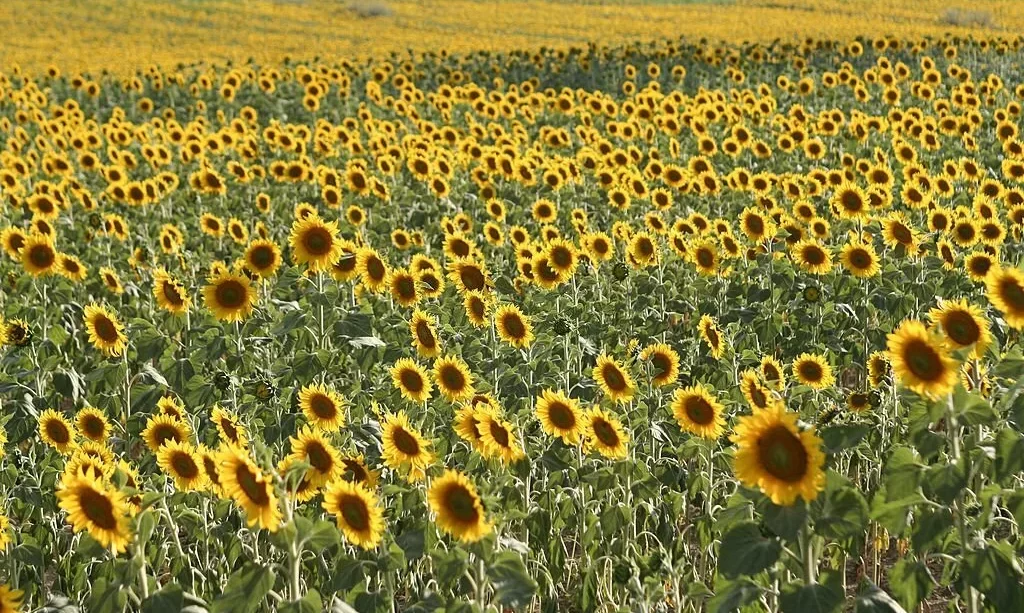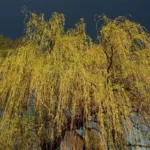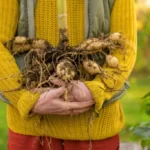Sunflowers, with their vibrant yellow petals and towering presence, are more than just a pretty face in the garden. These iconic flowers have a captivating world of reproduction that unfolds behind their cheerful appearance. Understanding how sunflowers reproduce not only deepens our appreciation of these botanical wonders but also offers insights into the circle of life in nature. In this article, we’ll take a closer look at the intricacies of sunflower reproduction, from their anatomy to the processes that lead to the creation of those beloved sunflower seeds.
- Diverse Sunflower Varieties: Includes Autumn Beauty, Dwarf Sungold, Grey Stripe, Lemon Queen, Mexican Sunflower, Velvet Queen, Mammoth, and more
- Varied Heights: Designed to grow sunflowers ranging from 18 inches to 7 feet tall; annual seeds perfect for direct outdoor sowing
- Season-Long Blooms: Enjoy sunflowers that bloom throughout the summer in vibrant yellow, orange, and red; seeds are easy to collect and save for next year
- Owned Small Business: Hand-packaged by a small, family business dedicated to quality and customer care
The Anatomy of a Sunflower
Before we dive into the reproduction process, let’s acquaint ourselves with the key parts of a sunflower. The classic sunflower, scientifically known as Helianthus annuus, comprises several essential components:
- Petals: Sunflowers boast bright yellow petals that serve as attractants for pollinators. These petals surround the central disk.
- Central Disk: The central disk of the sunflower is a cluster of small, tubular florets, each containing reproductive organs. This is where the magic of reproduction begins.
- Stigma and Style: Within each floret, you’ll find a stigma, a sticky surface that captures pollen, and a style that connects the stigma to the ovary.
- Ovary: Located at the base of the floret, the ovary houses the potential seeds, and it’s where fertilization takes place.
- Seeds: Once fertilized, the ovary transforms into seeds, and these seeds mature within the sunflower head, becoming the sought-after sunflower seeds.
Understanding this anatomy is crucial as it sets the stage for the remarkable journey of sunflower reproduction, which we will explore in the following sections.
Sunflower Reproduction: Pollination
At the heart of sunflower reproduction lies the process of pollination. Pollination is a critical step that brings male and female reproductive parts together. In the case of sunflowers, this typically involves the transfer of pollen from the male florets in the central disk to the female florets. Sunflowers have a clever strategy to attract pollinators, such as bees and birds. Their bright yellow petals and nectar-rich central disk serve as a beacon for these helpful visitors. As they visit the flowers in search of nectar, they inadvertently pick up pollen and transfer it to other flowers, enabling fertilization. This process is essential for the formation of seeds and the continuation of the sunflower’s life cycle.
Self-Pollination vs. Cross-Pollination
Sunflowers, like many other plants, can reproduce through both self-pollination and cross-pollination, each with its own advantages:
- Self-Pollination: This occurs when a sunflower’s own pollen reaches its stigma. While it’s a reliable way to ensure reproduction, it can limit genetic diversity.
- Cross-Pollination: In cross-pollination, pollen from one sunflower is transferred to the stigma of another sunflower. This promotes genetic diversity, which can result in more robust and adaptable sunflower populations.
Sunflowers are primarily cross-pollinated, thanks to the actions of pollinators. This mixing of genetic material contributes to the diversity and resilience of sunflower populations, making them better suited to face environmental challenges.
Understanding the roles of pollinators and the difference between self-pollination and cross-pollination is crucial in unraveling the mysteries of sunflower reproduction and its impact on the natural world.
Fertilization and Seed Development
Fertilization is the next step in the remarkable journey of sunflower reproduction. After successful pollination, pollen grains land on the stigma of a female floret, where they germinate and grow tiny tubes down to the ovary. This tube delivers male reproductive cells to the ovule inside the ovary, resulting in fertilization. Once fertilization occurs, the ovule transforms into a seed. This process happens within the sunflower head, where multiple florets are engaged in this complex dance of life. As the seeds develop, they start to mature, gradually changing from a tiny, green form to the familiar, plump sunflower seeds we recognize.
The Sunflower Life Cycle
Understanding sunflower reproduction wouldn’t be complete without exploring the sunflower’s life cycle. It begins with a tiny sunflower seed, usually planted in the soil. From this seed, a young seedling emerges, and as it grows, it develops its first true leaves. The sunflower then enters its vegetative stage, during which it focuses on growing tall and producing more leaves.
As it continues to grow, the sunflower eventually transitions into its reproductive stage, where it starts to form flower buds. These buds will eventually bloom into the bright, sunny faces that captivate our gardens. During this time, the sunflower’s reproductive system is hard at work, attracting pollinators and setting the stage for seed production.
After pollination and fertilization, the seeds mature within the sunflower head. When the seeds are fully developed, the sunflower starts to wilt, and its seeds are ready for harvest. Once harvested, these seeds can be used for planting, bird feed, or even human consumption, demonstrating the culmination of the sunflower’s fascinating life cycle.
Understanding the complete sunflower life cycle allows us to appreciate the beauty and complexity of sunflower reproduction in the broader context of the plant’s existence. It’s a process that not only creates stunning blooms but also the valuable seeds that have various uses in our world.
Harvesting Sunflower Seeds
Harvesting sunflower seeds is the culmination of the sunflower’s incredible reproductive journey. When the sunflower’s seeds have fully matured, they are ready for harvest. To do this, you can follow these simple steps:
- Check Seed Maturity: Ensure that the seeds are mature by observing their plumpness and the drying of the back of the sunflower head.
- Cut the Sunflower Head: Use sharp scissors or garden shears to cut the sunflower head from the plant. Leave a few inches of stem attached to make handling easier.
- Remove Seeds: Place the harvested sunflower head in a well-ventilated, dry area, allowing it to further dry. As it dries, you can gently rub or tap the head to release the seeds.
- Storage: Once the seeds are free, store them in a cool, dry place in an airtight container to prevent moisture and pests.
Harvested sunflower seeds can be replanted to grow new sunflowers or used for various purposes, from bird feed to delicious, nutritious snacks for humans.
Conclusion
The world of sunflower reproduction is a fascinating journey that begins with vibrant blooms and ends with the harvest of valuable seeds. Understanding the role of pollinators, the significance of fertilization, and the intricate details of a sunflower’s life cycle allows us to appreciate these iconic flowers in a new light. Sunflowers not only grace our gardens with their beauty but also enrich our lives with their seeds.
As we gaze upon a field of sunflowers swaying in the breeze, we can now see the complex life processes at work, all contributing to the creation of those beloved sunflower seeds. This knowledge connects us to the natural world and reminds us of the wonders that occur right in our own gardens. The next time you see a sunflower, you’ll know that there’s more to it than meets the eye; there’s a story of life, reproduction, and the beauty of nature waiting to be discovered.




